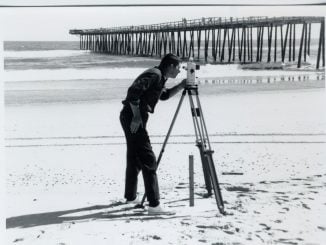Academics and industry leaders tried to make sense of the popularity and changing nature of a truly American genre at the Carolina Bluegrass Music Summit on the campus of the University of North Carolina – Chapel Hill.Sponsored by the Southern Folklife Collection and the UNC Department of Music, the November 11-12 symposium showcased live music by the Steep Canyon Rangers, the Grass Cats, and the Carolina Bluegrass Band. The latter band featured UNC student artists led by Russell Johnson of the Grass Cats.A respect for tradition and the history of the music accompanies any good presentation of bluegrass and one the most poignant profiles was a look at the life of North Carolina native Curly Seckler. Born in China Rose, N.C. in 1919, Seckler, 96, is one of the last living links to the early pioneers, before the music was known as “bluegrass,” a term usually credited to the legendary Bill Monroe.Penny Parsons, author of “Foggy Mountain Troubadour: The Life and Music of Curly Seckler” offered an important reminder when studying artists like Seckler: “The objective is to go about the people as they go about themselves.” Seckler, well known as a tenor singer and mandolin player for Flatt & Scruggs, played with essentially all the legends of bluegrass.Understanding Seckler is essential because it harkens back to a time when musicians traveled heavily on the back roads. This was still before the development of the interstate highway system and musicians slept in vehicles playing radio shows during the day and the dancehalls at night.While it’s still true of many groups today, back during Seckler’s rise there was little choice but to submit to a grueling schedule with little financial reward. The few that had the skill to make a living playing did so to avoid dangers like the coal mining life or the hard farming of Appalachia.”I started back in 1935 with nothing. I worked all those years for nothing, Seckler declared in Parsons’ book. “And I’ve still got nothing. But it’s okay. The Good Lord and me got together back in ’78, and everything changed. I’m ready to go whenever he wants me.” Seckler added that he’s in “no hurry” to leave just yet.Jack Bernhardt, a longtime bluegrass expert, noted that “bluegrass economy is a feast or famine economy, and most of it is famine. Bernhardt cited the films “O Brother, Where Art Thou?” and “Bonnie & Clyde” as being big boons for the industry.One of the reasons bluegrass music is enduring is because of its authenticity. In the symposium keynote address, UNC professor emeritus Robert Cantwell noted, “Bluegrass is about capturing the old life.” Even while many artists who hailed from a region where many were trying to make a better life for themselves, they remained attached to the land and the stories.Early bluegrass musicians at the same time wanted respectability and looked to shed their hillbilly image by always appearing professional in suits and ties. For many bands, especially those that convey the best of the traditional bluegrass and mountain sound, that tradition remains.In terms of the changes to the music Cantwell noted that bluegrass net “is cast so much wider.” Cantwell explained the professional training now involved is making it much more exclusive to reach the top.”It’s important we don’t have social and culturally poor conditions that creates this music,” observed Cantwell. It was a reminder that lifting people out of poverty is only a good thing.During his lecture Cantwell played a recording of “Ruby” from Earl Taylor and his Stoney Mountain Boys. It reinforced his point, perhaps in a way not fully imaginable to everyone assembled. Only a voice that high lonesome and haunting could be shaped by poverty, heartbreak, and isolation.
Related Articles

Features
History marked
May 22, 1926 Establishment of Great Smoky Mountains National ParkPresident Calvin Coolidge signed a bill establishing the Great Smoky Mountains National Park. The idea to establish the park in North Carolina and Tennessee originated in […]

Features
Entertainment briefs
‘Fate of the Furious’ Rides to Third Straight No. 1 while ‘Latin Lover’ Tops Tom Hanks in ‘The Circle’It has become a familiar story “The Fate of the Furious” is, once again, the box […]

Features
Up, Up and Away!
FUQUAY-VARINA The sky was a kaleidoscope over eastern Wake County for Memorial Day weekend. The annual Freedom Balloon Fest, put on by Project Uplift USA, Raleigh Jaycees and WRAL, welcomed an estimated 80,000 visitors […]
